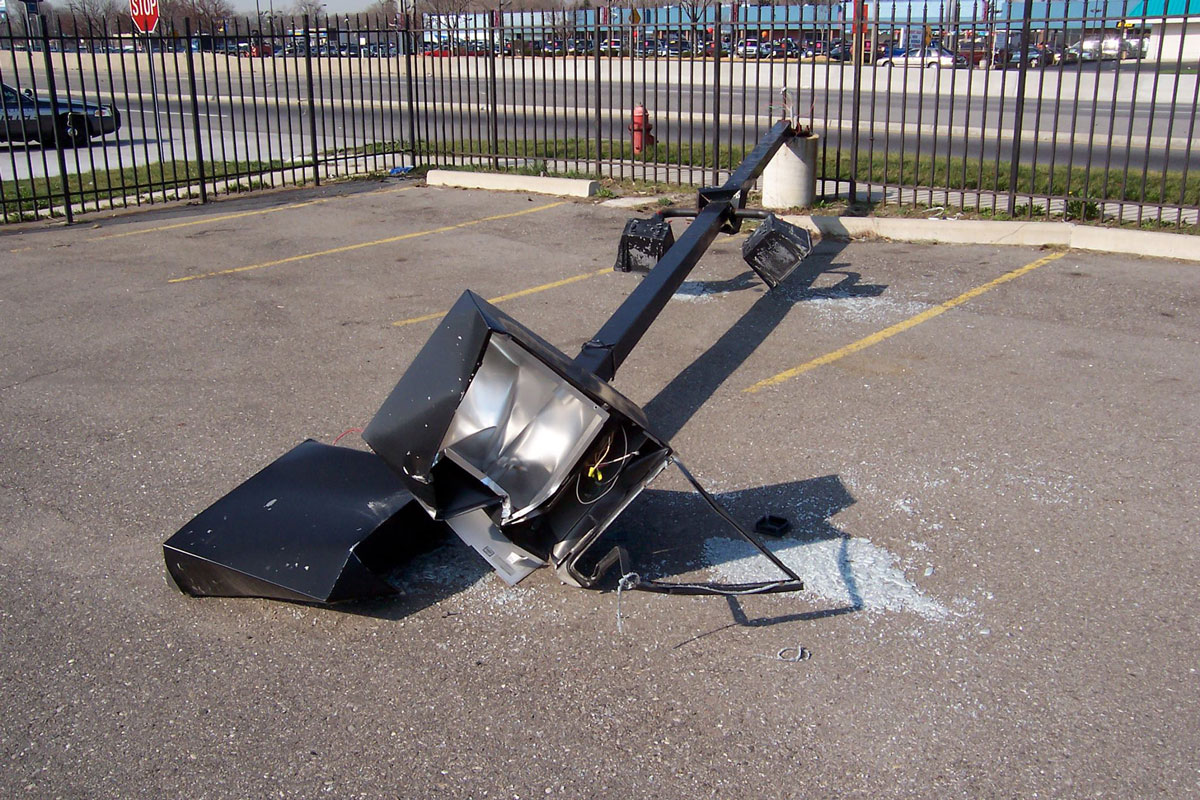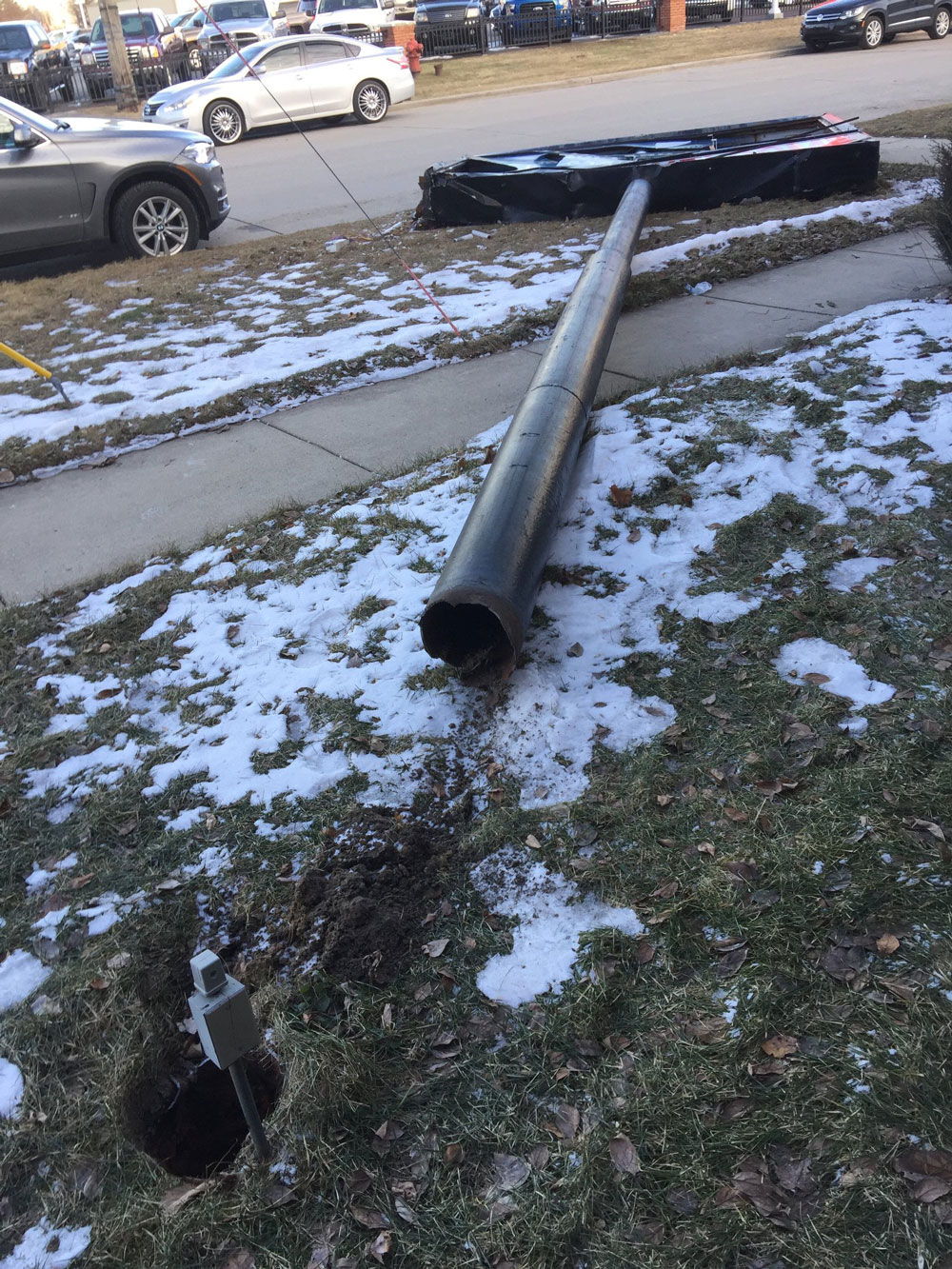Media | Articles
Your parking spot could kill you
In the post-WWII era, the GIs came home as the U.S. built the national freeway system. Hundreds of thousands of urban dwellers gravitated to inexpensive suburban land. Many more hit the road in the family sedan or station wagon, towing big aluminum trailers all over the country and looking for new careers. Strip centers dotted the roadsides, followed by the malls that anchored new home construction around them. Office buildings sprung up everywhere as new workers and businesses flocked to support the giant retail expansion of the ‘50s.
All this new development needed parking. Lots of parking. 10-foot by 20-foot parking spaces, laid out to the horizon for each location. All of that parking needed lighting. Incandescent lamps and arc-lighting were the norm, but they needed very frequent service. Mercury vapor lighting was new and provided much more light for the energy consumed. It also lasted for a very long time, allowing lights to be raised for far superior distribution. Specialized equipment was now needed to access the taller poles, but the less frequent service and lower energy cost of the more efficient lighting made up for the increase in the cost of servicing taller lighting.
Normal parking lot lighting went from closely-spaced short poles to 30- to 40-foot poles, with multiple heads, spaced much further apart. Over the years the light fixtures were changed from mercury vapor to sodium to metal halide to LED, with greater efficiency and operating cost with each update—but these new innovations were almost always placed on top of the same old light poles.
Flash forward 70 years. As the early highway bridges crumbled, they were replaced with steel that wasn’t supposed to rust but did. In the northern climates, they hadn’t truly factored in the unintended consequences of salt slathered on the roads all winter long. All attention goes to bridges that collapse, but little thought is given to the millions of 30-foot-tall steel parking lot poles acting as a sparse forest of danger, spreading risk in 60-foot diameters around each 30-foot-tall steel pole. Watch where you park; it could be deadly. The taller the pole, the more forceful the impact when they rust through and fall. In northern climates, salt-laced snow is always packed around pole bases, making the matter worse. When that snow melts, it’s trapped in and around the pole base.
Marketplace
Buy and sell classics with confidence

A light pole is just a hollow tube welded to a thick metal base plate. The metal of the pole and base plate is thicker for specific areas of the country with more severe weather. Wind loads are calculated by the amount of wind resistance the poles and fixtures offer in their as-manufactured state. Adding something as simple as a banner can overload rust-damaged poles and bring them down—hard. In this picture, you can clearly see the pock-marked inner surface being eaten away while the outside appears undamaged. One day, a simple wind crumples and folds the paper-thin steel.

The problem is due to poor installation techniques and lack of maintenance. Poles are supposed to be spaced above the concrete pedestal. About 90 percent of what I’ve seen in 40 years in the lighting maintenance business should raise alarm bells, but the problem usually goes unnoticed until it’s too late. Since steel light posts are not painted on the inside, they start to rust even before they are installed. If they are installed without a gap beneath the pole, the flakes of rust fall into the bottom of the pole and start to build up. Condensation forms on the inside surface daily and gravity pulls the droplets down into the rust flakes in the bottom of the pole where they act as a sponge and stay wet all the time. This debris builds up until the moisture eats the steel away from the inside, hiding an invisible killer.
This is a properly installed pole. With a space at the bottom, moisture is allowed to escape and rust flaking is minimized as the chimney effect causes cool air to be drawn into the sun-heated air inside the pole, drying it out every day.

This is an improperly-installed pole in the same lot. You can see the advanced rust on the base of the pole, as the moisture had nowhere to go once the base plate was sealed to the concrete pedestal. What you don’t see in this picture is what’s going on inside the pole.

This was taken at a local restaurant. No one should park near this pole. It had filled up with rust flakes past the wiring access hole.

This is a typical plugged pole base result. Moisture + rust flakes means the pole will eventually rust away from the inside out. I don’t know why this pole hadn’t fallen. You can see right through it.

Even more disconcerting are the number of sign posts and flagpoles that are direct-burial. Upon installation they’re set in a hole and leveled, then concrete is poured in around the pole, leaving a big underground void in the base. It fills up with water from condensate or ground water. Since there is nowhere for the water, to go the shaft rusts out from the inside.

This sign fell with such force that it dragged the whole pole and sign six feet from the hole in the ground. You can see the remnants of the pole in the ground.

No wind, it just fell on its own. The results could have been catastrophic.

Tragically, a local kindergartener was crushed a decade or so ago by a flagpole in a schoolyard. Think about it: Every school has a flagpole, but none are checked, as the rust is out of sight, and out of mind.
Here’s my advice. Don’t park within four parking spaces of a light pole, period. You don’t know what’s happening under the base cover. If you have to park near a pole or sign, park directly under it. The force of impact is multiplied by the distance from the pole base, since the tops likely reach near terminal velocity before they make contact with whatever is in the way. Avoid walking near them, too. There is little noise associated with a falling light or flag pole, so you get no warning.
This could be you. You would literally not know what hit you.
Watch where you park. It could be deadly.










